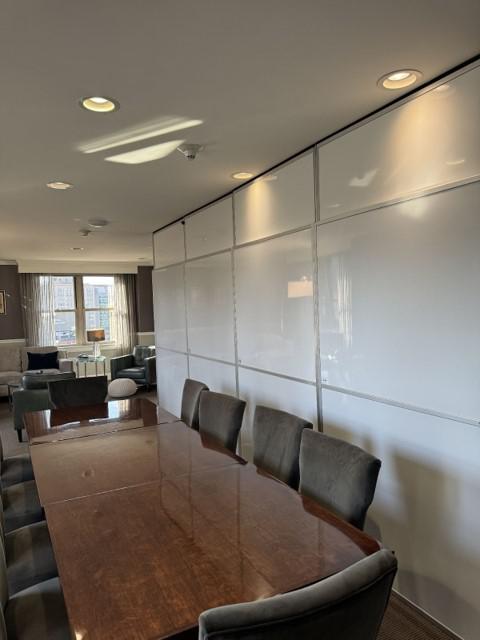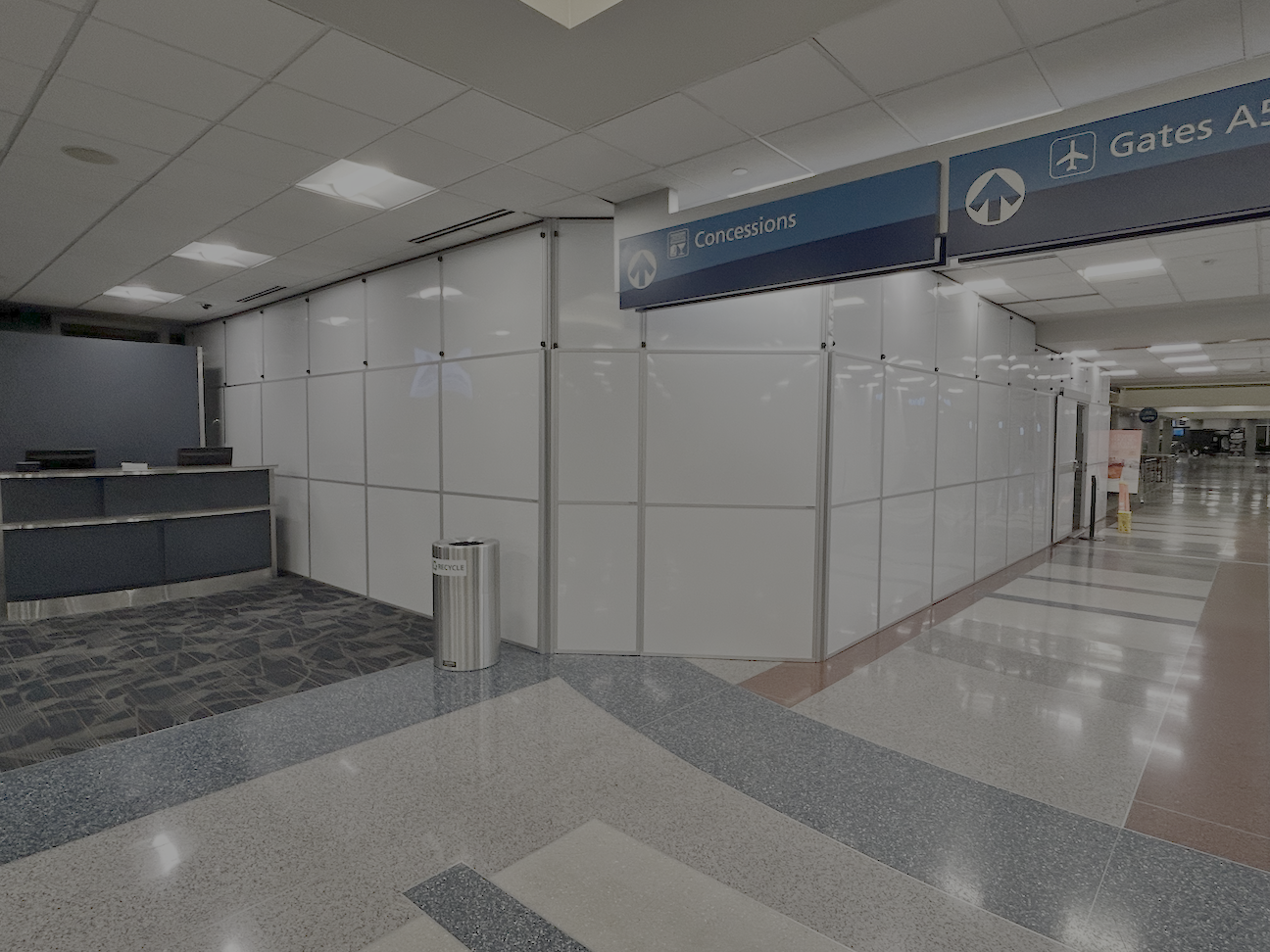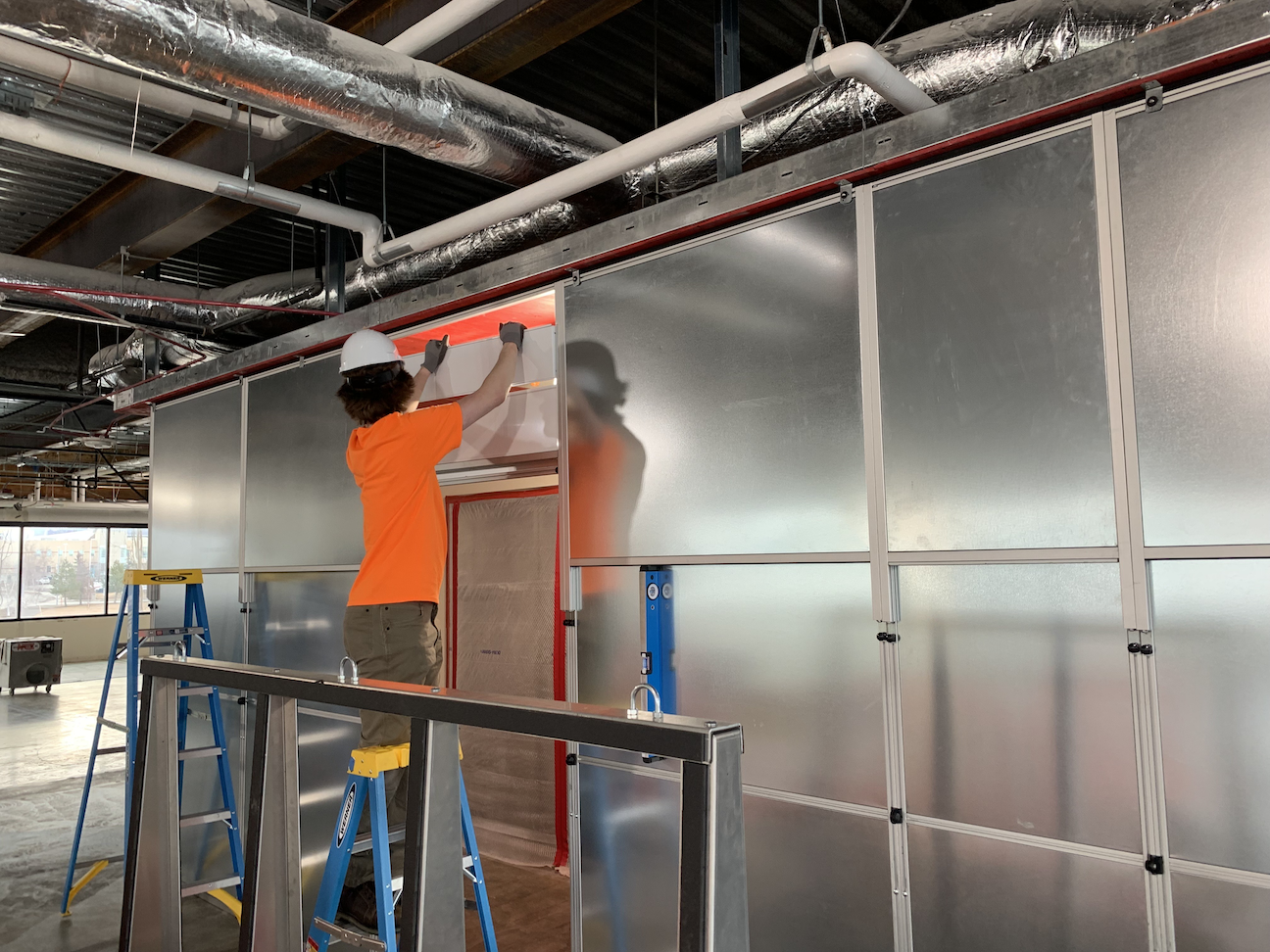Temporary walls may call to mind the confines of a cubicle or construction chaos, but they add flexibility and freedom to any office space. Here’s how temporary wall systems minimize distraction and sustain productivity throughout the challenges of a changing workplace.
Enhancing work zone safety during renovations.
Work zones are often noisy, messy, and dangerous. The heightened risk of dust inhalation and increased tripping hazards alone are a formula for injury liability.
Temporary wall systems are a tested and tried solution. Plastic barriers and cones do little to protect passersby from work spaces under renovation. With temporary modular walls, office managers can ensure renovations are kept separate from the rest of the inhabited office.
Ancillary benefits of temporary walls for work zones include noise reduction and aesthetic value. This is ideal if you have clients or management moving through at a moment’s notice.
Channeling foot traffic for smoother operations.
Open floor plans are standard today as they encourage collaboration. At the same time, efficient navigation of the workspace, as well as noise management, keeps people on task.
Studies have repeatedly demonstrated the impact that regular office banter and activity, including people walking past a desk, can have on productivity levels.
It isn’t just productivity that suffers. Creativity and innovation are hindered by the ambient noise present in most offices. A temporary wall system can diffuse disturbances in key areas.
Modular walls can divert distracting foot traffic from those frequently on calls, in meetings, or carrying out important tasks. Roles where personnel must work independently benefit from fewer interruptions.
Choose walls with a lower height to prevent the environment from feeling boxed in or closed off. With temporary walls, organizations find balance creating an office that both promotes teamwork and respects an individual’s need for peace in productivity.



Creating dedicated workspaces
Evolving organizations cannot renovate or relocate every time staff increases or a significant project comes up. Temporary wall systems let companies quickly increase or decrease the number of dedicated workspaces.
Modular walls can even create freestanding conference rooms on the fly, complete with doors. Those who have invested in open-plan spaces can choose where and when to add privacy.
The amount of labor and degree of cleanliness is also preferable to that of drywall installation. It’s much faster, there’s less waste, and the walls can be adjusted or removed again and again.



Temporary Wall Systems Benefit Every Office
- Easier to incorporate into the existing Have modular walls fitted with branded wraps or keep a clean surface. No need for drywall finishing or painting.
- Stay safe during all phases of construction. Temporary walls are easy to reposition during larger renovations, consistently blocking the view and hazards of an on-site work zone.
- More eco-friendly. Stay on track with sustainability initiatives. Temporary walls are reusable without the odors and dust associated with drywall installation.
- Maximum flexibility. Scale the space to accommodate teams and additional personnel. Simply remove the walls when the project is complete, returning the office to its original configuration without damage.
Creating a Scalable Office Space with TWS
Offices do not have to let common challenges damage productivity. They also do not have to delegate wall system management to in-house personnel.
Temporary Wall Systems (TWS) come with a highly efficient rental agreement that makes modular walls as temporary or semi-permanent as the situation requires. TWS handles maintenance, installation, and removal, reducing the time and cost associated with altering an office’s layout.
Get in touch with an expert to find a solution for your office today.



